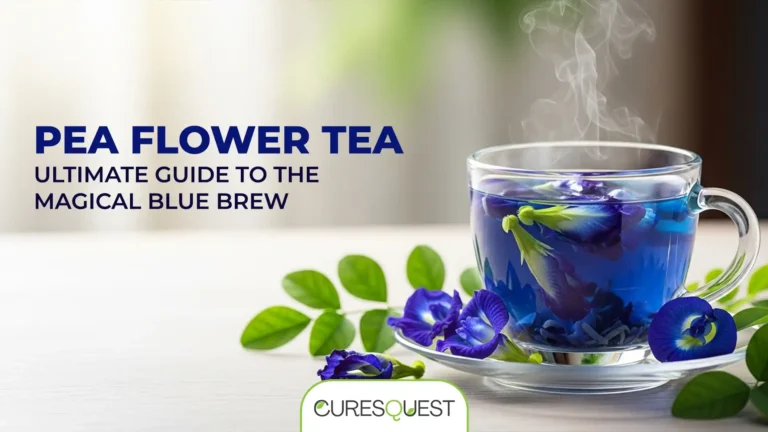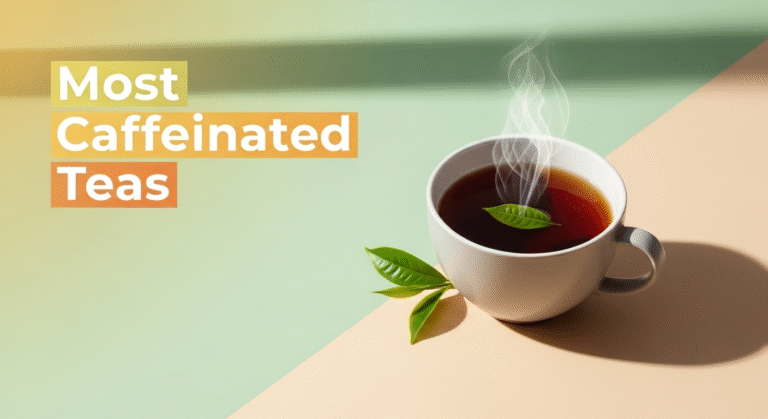In the vast world of herbal remedies, few plants hold as much historical significance and modern-day relevance for women’s health as the chaste tree, or Vitex agnus-castus. For centuries, its berries have been revered as a natural ally in navigating the complexities of the female reproductive system. Today, the soothing and beneficial qualities of chaste berry tea continue to make it a popular choice for those seeking a holistic approach to wellness.
If you’ve ever experienced the rollercoaster of premenstrual syndrome (PMS), faced irregular cycles, or sought gentle support during menopause, you’ve likely heard whispers of this remarkable herb. But what exactly is chaste berry tea, and how can it genuinely impact your health? This comprehensive guide will delve deep into the origins, science-backed benefits, preparation methods, and important considerations for incorporating this powerful brew into your daily routine. Prepare to uncover the secrets of this ancient remedy and empower your journey toward hormonal harmony.
Table of Contents
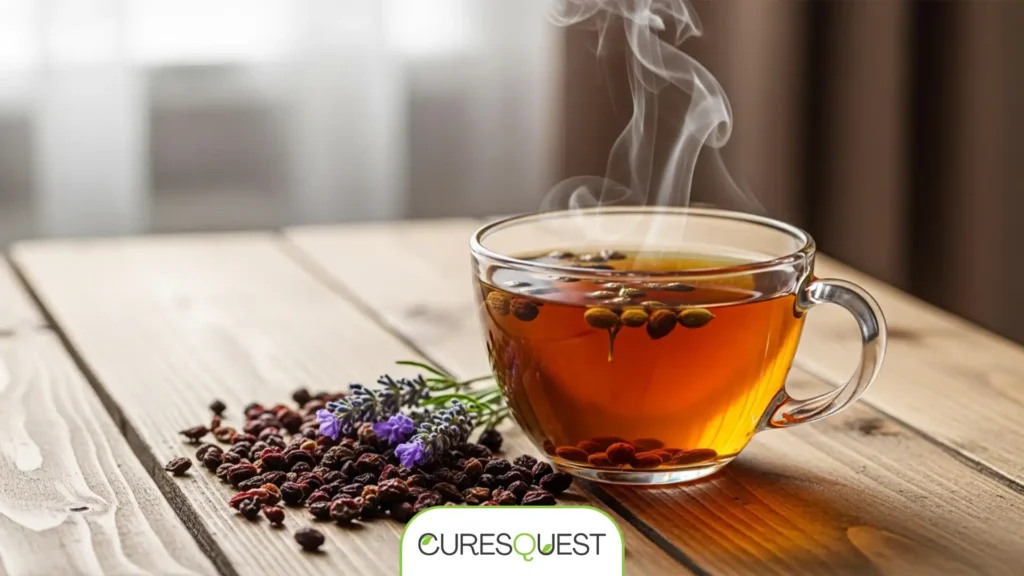
What is Chaste Berry Tea? Unveiling Vitex Agnus-Castus
At its core, chaste berry tea is an herbal infusion made from the dried berries of the Chaste Tree (Vitex agnus-castus). This deciduous shrub, native to the Mediterranean region and Central Asia, is known for its beautiful lavender-colored flowers and small, peppercorn-sized fruits. The name “chaste tree” itself alludes to its traditional use in suppressing libido, particularly among monks in medieval times, but its true power lies in its profound effects on hormonal balance, particularly in women.
The Plant Behind the Brew
Vitex agnus-castus belongs to the Lamiaceae (mint) family, a group renowned for its aromatic and medicinal properties. The berries, which are the primary part used for medicinal purposes, contain a complex array of active compounds, including flavonoids, iridoid glycosides (like agnuside and aucubin), and essential oils. It’s this intricate synergy of constituents that gives chaste berry tea its unique therapeutic profile. Unlike synthetic hormones, Vitex doesn’t contain hormones itself, but rather it acts on the pituitary gland, influencing the production of hormones such as prolactin, progesterone, and estrogen indirectly.
A Rich History of Traditional Use
The use of Vitex dates back thousands of years. Ancient Greek physicians like Hippocrates and Dioscorides documented its use for various female ailments, including regulating menstruation and aiding childbirth. Throughout the Roman Empire and into medieval Europe, it was a staple in herbal medicine, often prescribed for gynecological issues and even as an anaphrodisiac. This long history of traditional use, coupled with modern scientific inquiry, solidifies chaste berry tea‘s reputation as a time-tested remedy for women’s health. For those interested in its historical context, sources like Sacred Plant Co. offer fascinating insights into its journey through time.
The Science-Backed Benefits of Chaste Berry Tea
The true allure of chaste berry tea lies in its potential to address a spectrum of women’s health concerns, primarily through its influence on hormonal regulation. While research is ongoing, numerous studies and anecdotal evidence support its efficacy in several key areas.
Supporting Hormonal Harmony
The primary mechanism of action for Vitex is believed to be its ability to modulate dopamine receptors in the brain, which in turn influences the pituitary gland’s production of luteinizing hormone (LH) and follicle-stimulating hormone (FSH). This can lead to a decrease in prolactin and an increase in progesterone, helping to balance the estrogen-progesterone ratio. This balancing act is crucial for many aspects of female reproductive health.
- PMS Relief: One of the most well-researched benefits of chaste berry tea is its effectiveness in alleviating symptoms of premenstrual syndrome (PMS). Studies have shown significant reductions in irritability, mood swings, breast tenderness, bloating, and headaches. It helps to soften the intensity of the hormonal shifts that occur in the luteal phase of the menstrual cycle.
- Menstrual Cycle Regulation: For women experiencing irregular periods, amenorrhea (absence of menstruation), or short luteal phases, Vitex can be a game-changer. By promoting a more balanced hormonal environment, it can help restore a regular ovulatory cycle, making it a valuable herb for menstrual cycle support.
- Menopausal Symptom Management: As women transition through menopause, fluctuating hormones can lead to hot flashes, night sweats, and mood changes. While not a direct estrogen replacement, chaste berry tea may help ease some of these symptoms by supporting overall hormonal equilibrium. Many find it a gentle aid during this significant life stage.
- Potential for Fertility Support: For some women struggling with infertility due due to hormonal imbalances (such as elevated prolactin or luteal phase defect), Vitex may offer support. By normalizing hormone levels and promoting regular ovulation, it can create a more favorable environment for conception. However, it’s crucial to consult with a healthcare provider when considering it for fertility issues. Healthline provides further details on Vitex’s role in fertility.
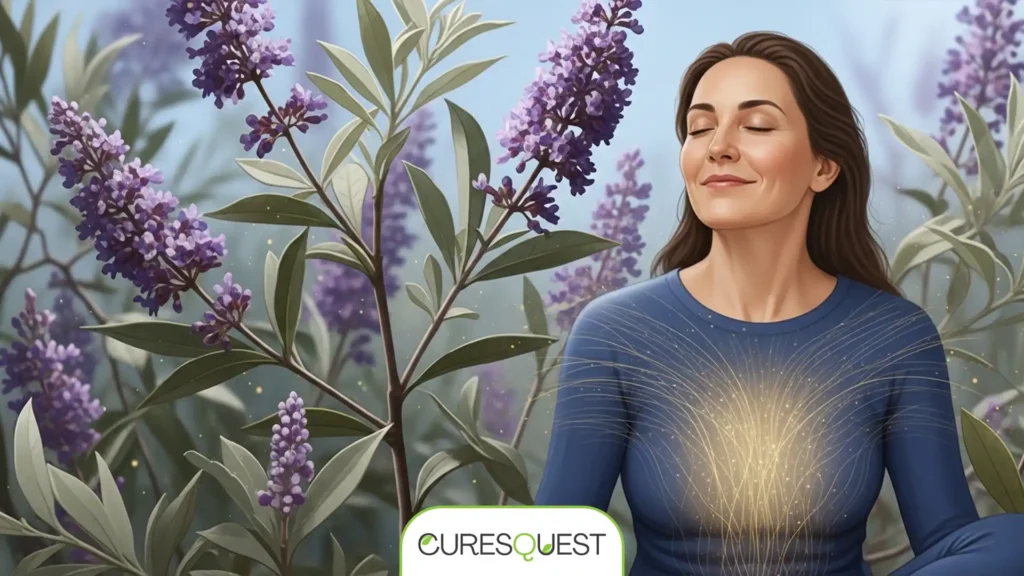
Beyond Hormones: Other Potential Advantages
While its hormonal benefits are paramount, chaste berry tea may offer additional perks:
- Skin Health: Hormonal fluctuations can often manifest as acne, especially around the menstrual cycle. By addressing underlying hormonal imbalances, Vitex may contribute to clearer skin for some individuals.
- Mood Enhancement: The ability of chaste berry tea to stabilize mood swings associated with PMS suggests a broader impact on emotional well-being. By alleviating physical discomfort and reducing hormonal volatility, it can indirectly improve overall mood.
- Breast Discomfort: Cyclic mastalgia, or breast pain and tenderness experienced before menstruation, is a common PMS symptom. Vitex has been shown to reduce this discomfort, likely due to its prolactin-lowering effects.
- Antioxidant Properties: Like many plant-based remedies, chaste berries contain antioxidants that help combat oxidative stress in the body, contributing to general health and well-being.
How to Prepare and Enjoy Chaste Berry Tea
Brewing a cup of chaste berry tea is a simple and enjoyable process. However, to maximize its therapeutic benefits, understanding the correct preparation and dosage is key.
Sourcing Quality Chaste Berries
The effectiveness of your tea starts with the quality of your ingredients. Look for organic, dried chaste tree berries from reputable suppliers. You can find them whole or in cut-and-sifted form, often available at health food stores, online herbal retailers, or specialty tea shops. Brands like Celebration Herbals Organic Chaste Berries or products from Holistic Corner are good examples of what to look for. Ensure the product is free from additives and contaminants. Some companies, such as Full Leaf Tea Company, also offer ready-to-brew Vitex blends.
Brewing the Perfect Cup
Making chaste berry tea is similar to preparing other herbal infusions. Because the active compounds are in the berries, a longer steeping time is generally recommended to extract their full potency. Here’s a simple guide:
| Ingredient | Quantity | Notes |
|---|---|---|
| Dried Chaste Berries (whole or cut) | 1 teaspoon (2-4 grams) | Start with a smaller amount and adjust to taste/effect. |
| Freshly Boiled Water | 8-10 ounces (240-300 ml) | Use filtered water for best flavor. |
| Sweetener (optional) | Honey, stevia, or maple syrup | Chaste berry tea has a slightly peppery, bitter taste. |
| Lemon/Ginger (optional) | Slice or small piece | To enhance flavor and add more benefits. |
- Measure: Place 1 teaspoon of dried chaste berries into a tea infuser, tea bag, or directly into your mug.
- Boil Water: Bring fresh water to a rolling boil.
- Steep: Pour the hot water over the berries. Cover your mug to prevent the escape of volatile essential oils.
- Infuse: Allow the tea to steep for 10-15 minutes. For a stronger brew, you can steep for up to 30 minutes.
- Strain & Enjoy: Remove the berries, sweeten if desired, and enjoy your therapeutic cup of chaste berry tea.
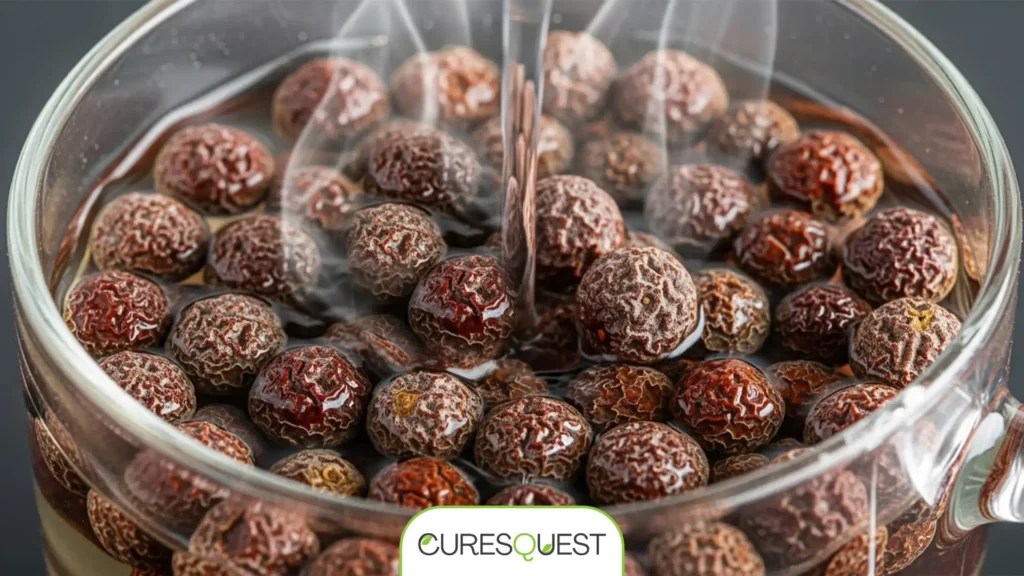
Dosage and Timing Considerations
Consistency is crucial when taking Vitex. It’s not a quick-fix herb; its effects build over time. Most herbalists recommend taking chaste berry tea daily for at least 2-3 months to observe significant benefits. It is often suggested to take it in the morning on an empty stomach for optimal absorption, though some prefer to take it with food. As for the optimal best tea to drink in the morning, chaste berry tea can certainly be a contender for those focusing on women’s health.
Standard recommendations for dried berries typically range from 175-225 mg (equivalent to 1 teaspoon of tea) once daily, though some sources suggest up to 400 mg. It’s best to start with a lower dose and gradually increase if needed, always observing your body’s response. For specific dosage guidance, especially if you’re using tinctures or capsules, always follow product instructions or consult a healthcare professional. You can also explore options from retailers like Walmart or Valley of Tea for various forms of chaste berry products.
Potential Side Effects and Precautions
While chaste berry tea is generally well-tolerated by most individuals, it’s a potent herb that can influence hormone levels. Therefore, it’s essential to be aware of potential side effects and situations where caution is advised.
Who Should Exercise Caution?
- Pregnancy and Breastfeeding: Vitex is traditionally used to aid fertility, but its use during pregnancy is generally discouraged due to its hormonal effects. Similarly, while some traditional uses exist for lactation support, modern medical advice often recommends avoiding it during breastfeeding without explicit medical guidance.
- Hormone-Sensitive Conditions: Individuals with hormone-sensitive cancers (e.g., breast cancer, uterine cancer, ovarian cancer), endometriosis, or uterine fibroids should avoid chaste berry tea unless advised by a specialist, as its hormonal modulation could potentially exacerbate these conditions.
- Medication Interactions: Vitex can interact with certain medications, including:
- Hormone Replacement Therapy (HRT) or Oral Contraceptives: It can interfere with the effectiveness of birth control pills or HRT due to its impact on hormone levels.
- Dopamine Agonists/Antagonists: As Vitex affects dopamine, it may interact with medications used for Parkinson’s disease or antipsychotics.
- Antidepressants: There’s a theoretical risk of interaction with certain antidepressants, particularly those affecting serotonin or dopamine.
- IVF Treatment: Women undergoing in vitro fertilization (IVF) should not use Vitex unless specifically instructed by their fertility specialist, as it can interfere with the controlled hormonal environment of these treatments.
Common Mild Side Effects
When side effects do occur, they are typically mild and may include:
- Upset stomach or nausea
- Mild skin rash or itching
- Headache
- Dizziness
- Acne flare-ups (initially, as hormones adjust)
- Changes in menstrual bleeding patterns (can be temporary as the body adjusts)
If you experience any severe or persistent side effects, discontinue use and consult your healthcare provider immediately. Always listen to your body and prioritize your well-being.
Consulting Your Healthcare Provider
Before starting any new herbal supplement, including chaste berry tea, it is always recommended to consult with a doctor, naturopath, or a qualified herbalist. This is especially important if you have pre-existing health conditions, are taking medications, or are pregnant/breastfeeding. A healthcare professional can provide personalized advice, assess potential interactions, and ensure it’s the right choice for your individual health needs. Cleveland Clinic offers a useful resource on chasteberry benefits and risks that can help inform your discussion.
Chaste Berry Tea vs. Other Herbal Remedies
While chaste berry tea is a star player in women’s hormonal health, it’s not the only herbal remedy available. Other herbs like dong quai, black cohosh, and red raspberry leaf are also popular for various gynecological issues. However, their mechanisms of action and specific applications differ. For instance, black cohosh is often used more specifically for menopausal hot flashes, while dong quai is known for blood tonic properties and general menstrual support. Vitex stands out for its unique ability to influence the pituitary gland and normalize progesterone levels, making it particularly effective for conditions linked to progesterone deficiency or elevated prolactin. Understanding these distinctions can help you make informed choices about your herbal regimen, ideally with professional guidance.

Frequently Asked Questions About Chaste Berry Tea
How long does it take for chaste berry tea to work?
Chaste berry tea is not a quick-acting remedy. Its effects accumulate over time. Most individuals need to take it consistently for at least 2 to 3 months to notice significant improvements in symptoms like PMS, menstrual regularity, or breast tenderness. Some may require up to 6 months for full benefits.
Can men drink chaste berry tea?
While primarily known for women’s health, men can technically drink chaste berry tea. However, its hormonal effects, particularly its influence on prolactin and potentially testosterone, mean it should be used with caution and under professional guidance. Some studies have explored its use for benign prostatic hyperplasia (BPH) or to reduce libido, but this is less common.
Is chaste berry tea safe to drink every day?
For most healthy women seeking hormonal balance, daily consumption of chaste berry tea within recommended dosages is generally considered safe for extended periods (e.g., 6-18 months). However, it’s wise to take breaks periodically or consult with a healthcare professional for long-term use, especially if you have underlying conditions or are taking other medications.
Does chaste berry tea help with PCOS?
Chaste berry tea can be beneficial for some women with Polycystic Ovary Syndrome (PCOS), particularly if their PCOS symptoms are linked to elevated prolactin levels or irregular ovulation. By helping to regulate the menstrual cycle and improve progesterone levels, it may alleviate some PCOS symptoms. However, PCOS is complex, and Vitex is not a universal solution; a holistic approach is often needed.
Can chaste berry tea cause weight gain?
Chaste berry tea is not typically associated with weight gain. In fact, by helping to reduce bloating and stabilize hormones, some individuals might experience a reduction in water retention, which could indirectly affect weight. Any perceived weight changes would likely be related to overall hormonal balance rather than the tea itself.
What is the best time of day to drink chaste berry tea?
Many herbalists recommend drinking chaste berry tea in the morning, preferably on an empty stomach. This timing is thought to align with the pituitary gland’s natural rhythm and may enhance absorption. However, consistency is more important than exact timing, so choose a time that you can reliably stick to.
Can I take chaste berry tea with other herbal supplements?
Combining chaste berry tea with other herbal supplements should be approached with caution. While some combinations might be synergistic, others could lead to unwanted interactions or excessive effects. Always research potential interactions and, ideally, consult with an herbalist or healthcare provider before combining multiple supplements.
Conclusion
From ancient medicinal practices to modern scientific scrutiny, chaste berry tea has consistently emerged as a powerful and revered ally for women’s health. Its ability to gently nudge the body towards hormonal equilibrium offers a natural pathway to relief from common discomforts associated with PMS, irregular cycles, and menopausal transitions. By understanding its benefits, proper preparation, and necessary precautions, you can harness the full potential of this remarkable herbal infusion.
Embracing chaste berry tea is more than just a remedy; it’s an invitation to connect with your body’s natural rhythms and support your well-being holistically. As with any potent herb, mindful use and professional guidance are key to a safe and beneficial experience. Consider making this ancient brew a part of your daily ritual and discover the profound harmony it can bring to your life.



